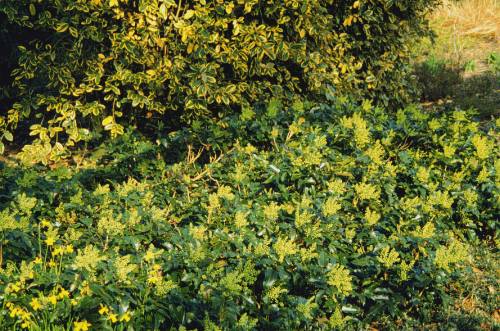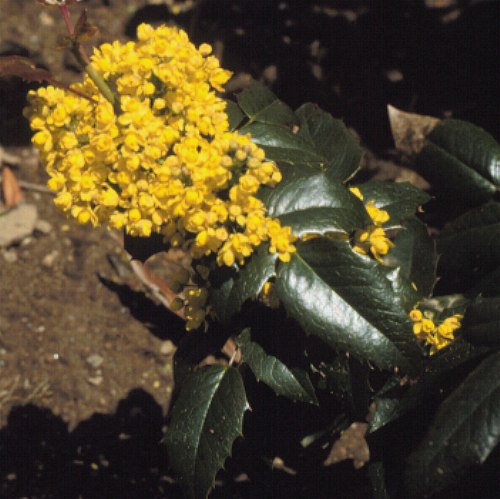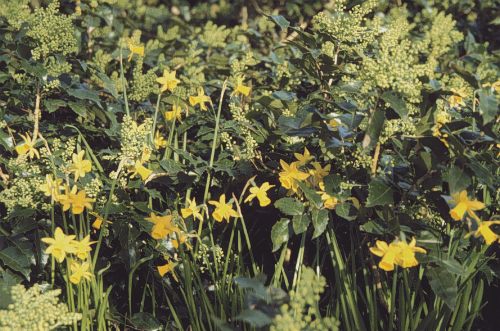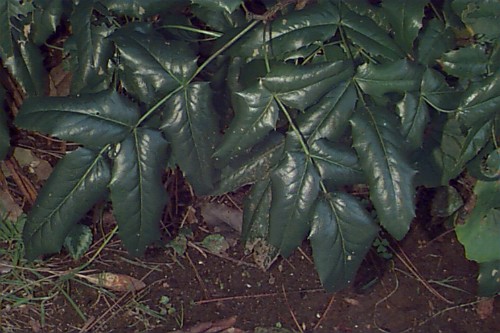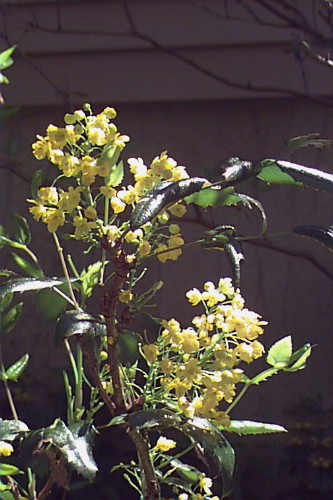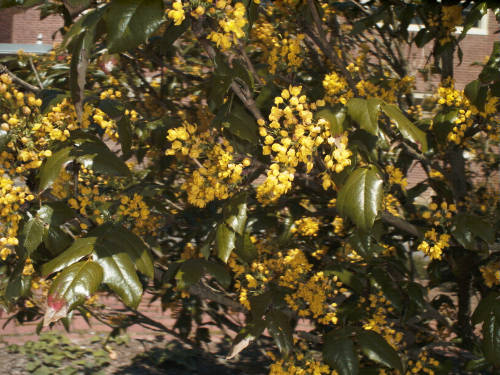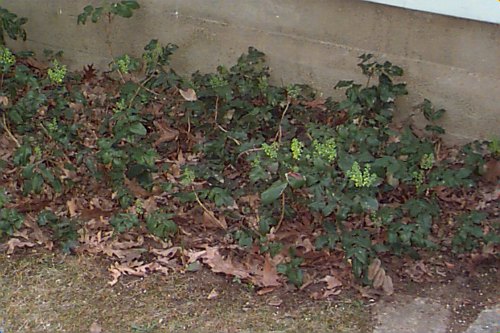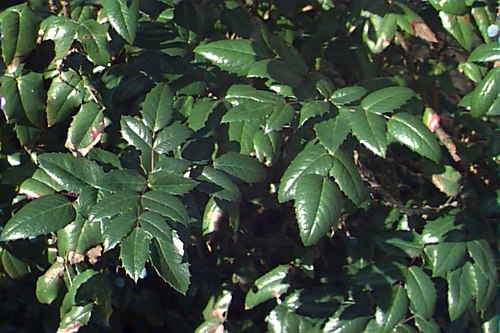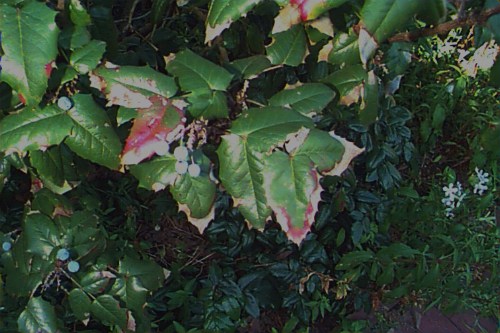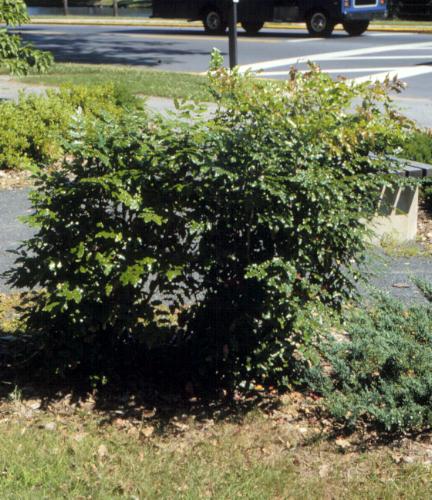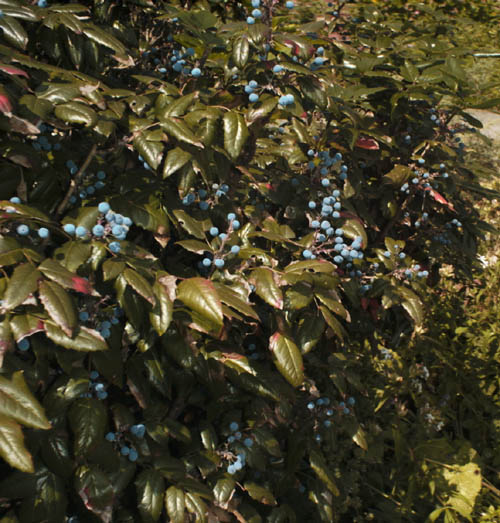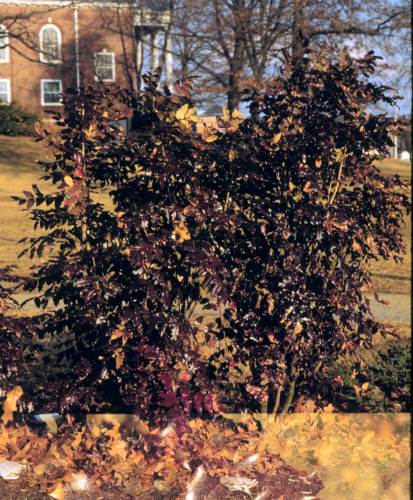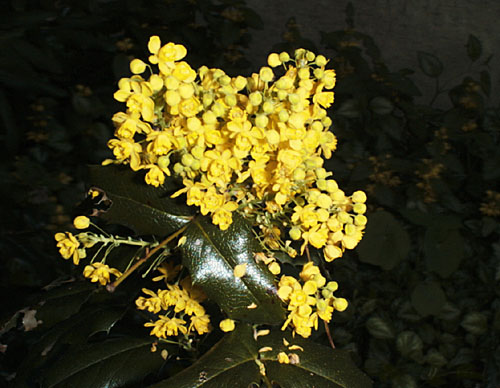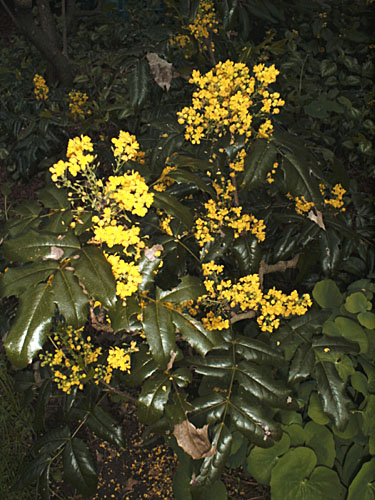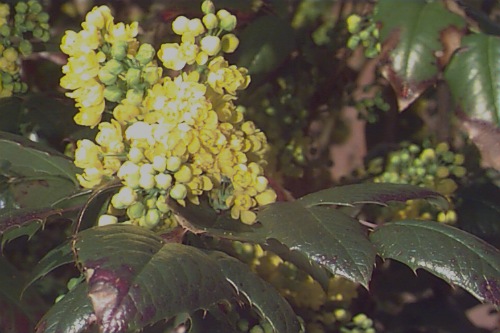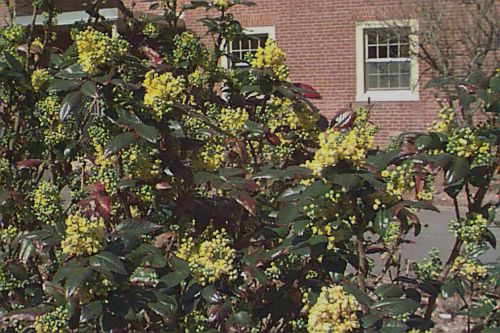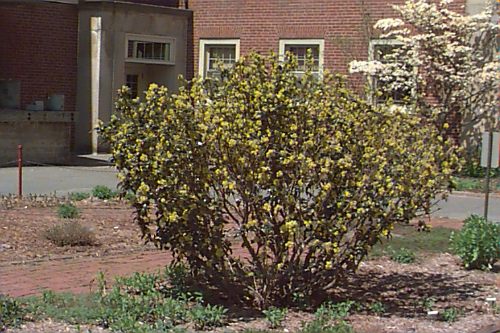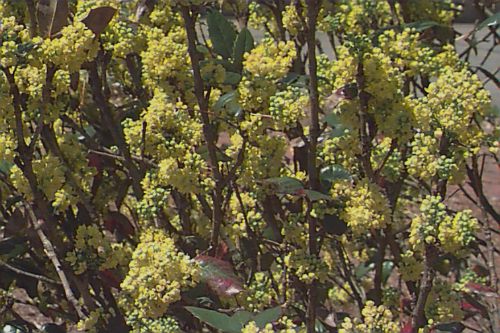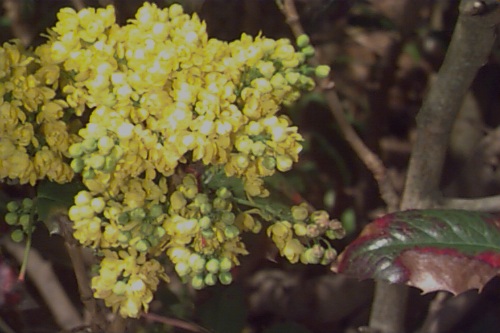Mahonia aquifolium
Oregon Grapeholly, Oregon Hollygrape
Berberidaceae
ExpandHabitat
- native to British Columbia south to Oregon; Pacific Northwest
- zone 5 and protected sites in 4
Habit and Form
- a broadleaf evergreen
- irregular branching with upright to spreading habit
- shoots are thick and branch infrequently
- stoloniferons and colonizing
- typically 3' to 6' tall with similar spread
- slow growing
- coarse texture
Summer Foliage
- alternate leaf arrangement
- pinnately compound, evergreen leaves
- leaflets attach directly to the rachis
- leaflets spiny
- foliage (leaflets) resembles that of English Holly
- dark glossy green color
- new growth emerges reddish or bronze
- leaves are 6" to 12" long, with 7 to 12 leaflets
Autumn Foliage
- evergreen foliage turns purple-bronze in winter
Flowers
- blooms in April to early May
- yellow flowers in 2" to 3" long racemes
- flower clusters most numerous toward the shoot tips
- can be quite showy
Fruit
- fruits held in clusters
- change from green to blue-black in late summer
- common name refers to fruit resemblance to grape clusters and because it is native to Oregon
- individual fruit are 0.3" to 0.5" in diameter
Bark
- gray-brown color
- not of ornamental importance
Culture
- prefers partial shade
- avoid high pH soils
- prefers moist, organic, acid, cool soils
- hot, dry sites are not tolerated well
- keep out of windswept sites
Landscape Use
- foundation plant
- mass plantings
- shrub border
- mixes well with other broadleaf evergreens
- useful in shady spots
- desirable for spring bloom, high quality summer foliage and blue fruit in fall
Liabilities
- very susceptible to foliar desiccation in winter
- leaf/burn leaf drop is likely in sunny windswept sites
- chlorosis on high pH soils
- plants can look like they were hit with a flame thrower, yet the stems are fine and releaf in spring
ID Features
- evergreen, pinnately compound leaves, alternate arrangement
- inner yellow bark
- leaves spiny, shiny dark green
- yellow spring flowers in clusters
- blue-black fruit
- leaf base partially encircles stems
- stems coarse, lightly branched
- purple bronze winter foliage
- reddish new growth
- winter desiccation injury often present
Propagation
- stratified seed
- cuttings
- division
Cultivars/Varieties
'Compactum' - Representing the only cultivar commonly offered in the trade, this plant usually reaches only 3' tall. The leaves are glossy green, bronze in winter. More than one clone may be found under this name, as some plants are upright shrubs, whereas others are stoloniferous and rarely bloom. Other dwarf forms include 'Apollo', 'Donnewell', 'Forescate' and 'Moseri' (a M. x wagneri selection).
'King's Ransom' - Perhaps a hybrid selection, this cultivar has increased in popularity. It is an upright grower (to 5' tall) with blue-green foliage that turns bronzy purple in winter.
'Smaragd' (also known as 'Emerald') - This is considered a very fine selection, as its lustrous deep green leaves turn bronze-purple in winter. It blooms heavily all along the stems and grows into a medium-sized shrub to 4' tall.
